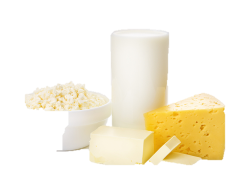Food groups explained

Fruit and vegetables:

It’s recommended that we eat at least 5 portions of fruit and vegetables a day which most of us are still not achieving. Fruit and vegetables should make up at least a third to a half of what we eat every day and you can choose from fresh, frozen, tinned and dried. Try to limit your intake of smoothies and fruit juices to 150 ml per day as they are usually high in sugar and don’t contain as much fibre.
Fruit and vegetables are a great source of essential vitamins, minerals and fibre which are all needed to keep our bodies healthy.
Carbohydrates:

Carbohydrates are foods that break down to sugar in the body. These may be sweet foods like cakes, sweets, chocolate, biscuits, sugared breakfast cereals, honey, fruit and concentrated fruit juices, or starchy foods like potatoes, pasta, rice and bread.
Sweet (refined) carbohydrate foods should be limited as they can cause blood glucose levels to rise quickly. These types of carbohydrates are classified as having a high glycaemic index. Starchy carbohydrates (like rice, potatoes, bread/ pizza base, oats, pasta) may be taken in moderation and can make up about a quarter of our plate along with plenty of vegetables and protein foods.
Some people have found reducing their starchy carbohydrate intake below these levels helps them lose weight, and gives better control of their blood glucose levels if they have diabetes (this will be discussed in the next section).
There are better choices that you can make with starchy foods that raise blood glucose levels much slower. Wholegrain varieties have a much lower glycaemic index so choose these when possible. Examples of these are whole-wheat pasta, wholegrain bread, brown rice and potatoes with their skin on which provide the most nutrients and contain higher levels of fibre.
Dairy:

Dairy includes things like milk, yoghurt and cheese and you should aim to eat 2 – 3 portions of dairy a day. Dairy products are a great source of calcium, which is really important to keep your bones strong, protein, which is important to build and repair muscles, and vitamins.
Dairy products can sometimes be high in fat and sugar so check the labels and choose low-fat and low-sugar varieties.
Beans, meat, fish, eggs, pulses and other proteins:

All of these foods are rich in vitamins, minerals and protein, which is essential for building and repairing muscles and tissues in our body. We should aim to eat 2–3 portions a day and 2 portions of fish, 1 of which is oily fish, per week.
Try to choose lean cuts of meat and limit the amount of red and processed meat, such as bacon and sausages, as these tend to be higher in saturated fat. Pulses such as beans, lentils and peas are good alternatives to meat as they are great sources of protein and fibre and are lower in saturated fat.
Oily fish contains omega 3 fatty acids which are essential fatty acids that cannot be made by the body in sufficient amounts. They can lower triglycerides (a type of ‘bad’ fat found in the blood) and help protect against heart disease. Examples of oily fish include fresh tuna, salmon, sardines and mackerel.
Oils and spreads:

We do need some fat in our diets but this should come from unsaturated fats such as sunflower, rapeseed and olive oils and spreads made from these oils. There are good fats called monounsaturated fats which include, avocados, olives, almonds, cashews and peanuts. Try to use cooking oils made from plants or seeds like canola, olive, peanut, soybean or sesame oils rather than animal-based products such as lard, dripping and butter.
Too much fat in our diets, particularly saturated fats, (such as in meat, lard and other animal products) raises our cholesterol levels which increase the risk of developing heart disease and stroke.
Foods high in fat, sugar and salt:

As part of a healthy diet, we don’t need any foods that are high in saturated fat, sugar and salt. Salt can raise blood pressure, so avoid adding salt to food and cooking and avoid processed/ tinned food with high salt levels.
High fat/ sugar/ salt foods will damage our health and increase the risk of developing heart disease, diabetes, certain types of cancer and strokes.
Obvious examples of these types of foods are cakes, biscuits, crisps, chips, fast foods, ice cream and sugary drinks. We should only eat these occasionally and in small amounts, as they are high in calories, saturated fat, sugar and salt, which over time can seriously affect our health.
Ready-made meals are also in saturated fats, salts and sometimes have added sugar. Avoid buying ready-made meals and highly processed foods such as frozen chips, nuggets and pizzas as they generally have little nutritive value.
Additional resources: The British Dietetic Association (BDA) is a great resource for advice about healthy eating and for further reading on the different food groups.



Leave a Reply
You must be logged in to post a comment.